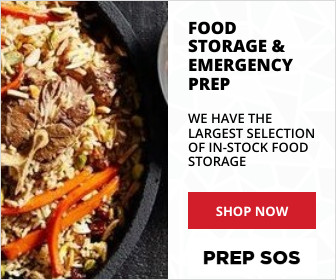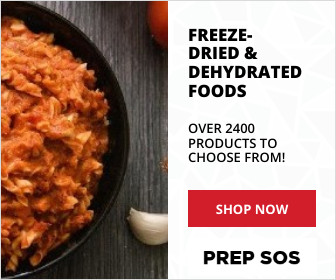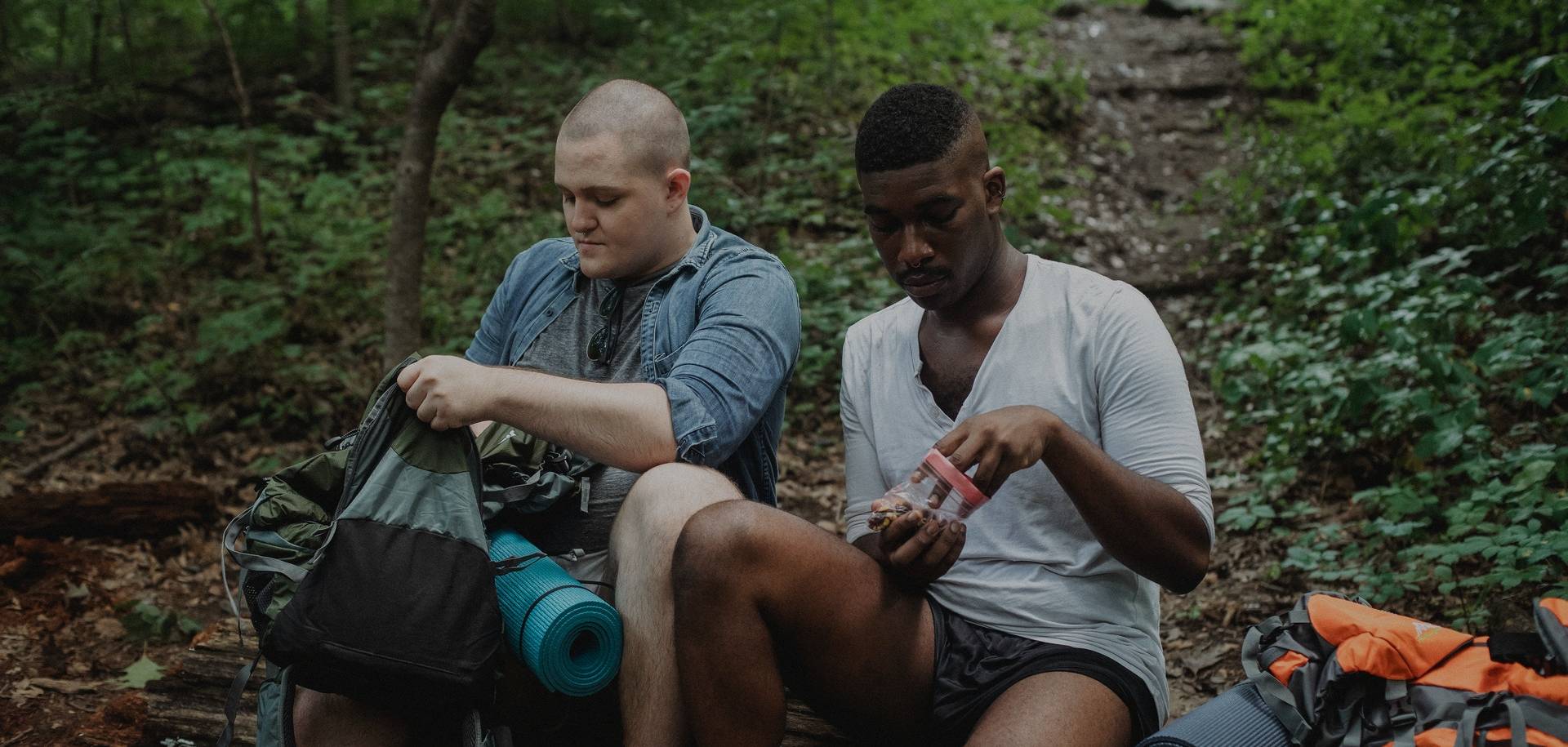
When planning your meals and snacks for your backpacking trip it can be a challenge to make sure you’re bringing as many calories as you need to stay nourished, while also not adding excessive weight to your pack. A lighter pack means a faster and easier trip. The best way to do this is to find light foods that pack a high-calorie count. Let’s go over some of those foods and other ways you can achieve the most efficient food plan!
So, how can you best pack and plan your food supply for your backpacking trip? The answer is the find lightweight foods that pack as many calories as possible. This will keep your pack light while still ensuring that you have enough calories to sustain you on the trip.
To best plan your meals, you’ll need to know specific foods that pack nutrients while not weighing down your pack. We’ll go over this, and other tips to help you pack the lightest pack possible.
How Much Should Your Food Weigh?
Often people wonder how many pounds of food they should pack. While this is a good question, it’s a lot more personal than that. A good rule of thumb is around 1.5 to 2.5 pounds of food (2500-4500 calories) per person per day. While this is a good statistic to look at, you can pack 1.5 pounds of food that essentially has no nutritional value. Then you’re just adding on 1.5 pounds of weight for nothing. It’s better to find the number of calories you will personally need, and pack based on that.
Personal Planning
Before planning your meals and needed calorie count, there are several things to take into consideration. The calorie count is very personal because it depends on so many factors. Take the following into consideration to find your needed calorie count per day on the trip.
- Normal daily calorie count
- Weight
- Shape
- Speed of metabolism
- Source of calories (nutritional facts)
- Time of year (higher calorie count during winter)
Calories Matter More Than Weight
To demonstrate how important, it is to find foods that pack more calories, the following list shows how more weight doesn’t always mean better nutrition. A blog on MSR Gear presents several wonderful examples of how important it is to take the calorie and nutritional count of items into account, as this can save you lots of space.
For this example, they calculate 4,000 calories per day for five days, totaling 20,000 calories for the trip. The following are examples of how those calories can differ in weight.
- 5 pounds at 60 calories per oz. (hummus, tuna, dried apples)
- 5 pounds at 80 calories per oz. (raisins, jerky, bagels)
- 5 pounds at 100 calories per oz. (instant rice, Cliff Bars, candied ginger)
- 5 pounds at 120 calories per oz. (Pita chips, Jolly Ranchers, doughnuts)
- 9 pounds at 140 calories per oz. (chocolate, peanut butter pretzels, Cheez-Its)
What to Pack
There are many options of food to pack from store-bought packs to homemade recipes. There are even many snack items you can include in your pack. Let’s go over some of the best quality foods you can bring.
Food Packs that Pack a Punch
Store-bought food packs are a great option because they’re guaranteed to be full of calories and are as light as possible. The following packs are from several great companies such as Rei and Sportsman’s Guide.
| Food and Link | Price | Calories per Serving | Net Weight |
| Mountain House Chicken & Dumplings | $8.50 | 300 | 4.5 ounces |
| Backpacker’s Pantry Pad Thai with Chicken | $12.95 | 420 | 7.3 ounces |
| Trailtopia Adventure Food Brown Sugar and Raisin Oatmeal | $3.00 | 303 | 2.7 ounces |
| RXBAR Oatmeal | $3.50 | 250 | 2.2 ounces |
| PEAK REFUEL Chicken Pesto Pasta | $12.95 | 460 | 5.71 ounces |
| Mountain House 3-Day Emergency Food Supply Kit | $74.00 | N/A | 2 pounds and 7.4 ounces |
| Peak Refuel Breakfast Skillet | $12.99 | 320 | 4.87 ounces |
| XMRE Lite MRE Food Supply (12 Meals) | $67.49 | 600-900 per meal | N/A |
Lightest Foods with the Most Calories
Whether you’ll incorporate the following foods into your meals, or use them as snacks, they pack a lot of nutrients and weigh barely anything. The following list has been comprised mainly of information from Green Belly and Section Hiker.
| Calories/oz | Fat | Carb. | Protein | |
| Almonds | 165 | 72% | 15% | 12% |
| Peanuts | 166 | 70% | 14% | 14% |
| Walnuts | 185 | 83% | 8% | 8% |
| Sunflower Seeds | 166 | 83% | 13% | 12% |
| Olive Oil | 250 | 100% | 0% | 0% |
| Oats | 110 | 15% | 70% | 14% |
| Soybeans | 127 | 40% | 26% | 33% |
| Peanut Butter | 165 | 72% | 13% | 15% |
| Pinto Beans | 98 | 3% | 74% | 21% |
| Hard Cheese | 115 | 72% | 2% | 24% |
| Milk Powder | 165 | 49% | 30% | 22% |
| Egg Powder | 107 | 0% | 4% | 95% |
| Honey | 86 | 0% | 99% | 0% |
| Agave | 88 | 0% | 99% | 0% |
| Banana Chips | 147 | 55% | 45% | 1% |
| Raisins | 65 | 1% | 95% | 3% |
| Chocolate Chips | 169 | 63% | 30% | 5% |
| Brownie Mix | 125 | 24% | 70% | 4% |
| Meal Powders | 120 | 42% | 12% | 24% |
| Flour Tortillas | 87 | 23% | 67% | 11% |
| Probars | 125 | |||
| Nutella | 150 | |||
| Peanut M&M’s | 140 |
Homemade Calorie-Packed Foods
Homemade meals are great because you can pack in lots of calories. It can be difficult to keep the weight down, but when keeping the weight down in other areas you can afford a few homemade meals. There are many delicious recipes out there that you can try according to your personal tastes. Fresh Off the Grid has many great recipes you can try.
7-Layer Bean Dip
This recipe is delicious, and it actually feeds two hikers. Or if you’re doing a solo trip it can feed you for two meals. Its calorie-count is extremely dense as well, which makes it well worth it. I found this recipe on MSR Gear.
Ingredients:
- 1 package of Santa Fe refried beans
- ½ cup dehydrated bell peppers
- ½ cup dried tomatoes
- ¼ cup powdered sour cream
- ¼ cup powdered cheddar cheese
- 3 tbsp. dried onions
- 2 tbsp. taco seasoning
- 2-4 tbsp. olive oil
- 1 bag of tortilla or pita chips (preferably Juanita’s, or another high-calorie brand)
At Home:

Combine all ingredients, except for the olive oil in a Ziploc bag. Be sure that the powdered ingredients are thoroughly broken up and incorporated.
On the Trail:
Stove method: Bring a half-liter of water to a boil. Either add the ingredients to the pot or, for easier clean-up, allow the water to cool slightly and add directly to the Ziploc bag. Stir to incorporate and seal for 10 minutes.
Cold-soaked: Two hours before you plan to eat, add a half-liter of water directly to the Ziploc bag, or combine the dried ingredients with the water into a container with a screw-top lid (empty peanut butter jars and restaurant take-out containers seem to be especially popular with thru-hikers). Stir to incorporate. Continue hiking until your bean dip has fully rehydrated.
Additional Tips and Tricks
While this list covered the basics, there are still many things you can do to help cut the weight of your pack.
High-Calorie Food Additions
There are several things you can add to your meals or snacks that weigh nearly nothing but add lots of calories. Following is a list of some of those that might be worth it to add to your pack.
- Oil (olive, roasted peanut, avocado, truffle oil)
- Mayo
- Dehydrated dairy products
- Any other forms of fat (fat punches in at about 225 calories per ounce)
Tips
Following are some tips on how to pack and how to eat during your backpacking trip that can make it go a lot smoother.
- Look for food that is high fat to water ratio. Less water and more fat mean less weight and more calories.
- Denser more fatty foods may seem counterintuitive, but food is fuel, and you need as much fuel as possible on this hike.
- Ditch the stove and fuel if you can.
- Carry a light load for the last day of food. This will motivate you to get to your destination so you can splurge on a big meal.
- The Hiking Life suggests eating the heaviest, moistest foods during the front-end of your hike. This will help to lighten your load (literally).



